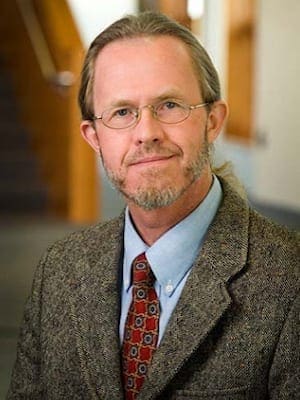It might happen next flu season, or the following, or five years from now. Sometime soon, almost inevitably say the experts, a deadly flu virus will ravage the earth and its human inhabitants.
Vaccine and antiviral stockpiles will cover, at best, 20 percent of the U.S. population. Of those who get infected, half a million or more may require intensive care and ventilator support, with only about 100,000 machines available.
Who gets the goods? Who decides? And on what normative grounds, Christian or other, will such life and death decisions be made?
The ethics of influenza vaccination, as currently practiced, is well known and mostly undisputed. In situations of scarcity, vaccine goes first to those most vulnerable to infection, especially healthcare workers, young children, and the elderly.
Flu ethics is being reconsidered, however, in anticipation of an influenza pandemic such as may result from potential mutations of the avian borne virus H5N1. If this pathogen becomes easily transmittable by humans and not birds only, the death toll could be catastrophic and our resources stretched beyond anything seen since the flu pandemic of 1918-19.
Bird-flu ethics, also, likely would look different than norms assumed now.
Department of Health and Human Services Secretary Michael Leavitt is blunt in his estimation of the danger. “Let me be clear. It is only a matter of time before we discover H5N1 in America…. Its appearance here [is] almost inevitable.”
In his Pandemic Planning Update, the DHHS Secretary refers to “a race against a fast moving virulent virus.” As of that report in March 2006, bird flu had spread to 37 nations on three continents, infecting 175 people, 96 of whom died.
The federal government allotted $3.8 billion this year for national preparedness against a sort of “terrorism” that could dwarf all others. Already, there is an official Web site. Another 6,000 ventilators, plus N95 respirators and surgical masks by the millions, will be purchased this year.
The push is on to manufacture cell-based, rather than egg-based, bird-flu vaccine. In the meantime, two FDA-approved antivirals, Tamiflu and Relenza, are being stockpiled. When taken within 48 hours of the onset of symptoms, both have proven effective against H5N1. By the end of 2006, HHS hopes to have enough antivirals stockpiled so as to protect at least 26 million Americans. The long-term goal is to be able to treat 25 percent of the population, or 75 million people.
That leaves a lot of us to fend for ourselves—or themselves. So who gets protection?
If normal flu ethics dictate, healthy adults of generations X and Y through the baby boomers will be fending, while distributing generatively all available vaccinations, antivirals and ventilators to those both younger and older, and sicker. Those most vulnerable need the most protection, according to the HHS influenza-prioritization plan.
But in the 1918-19 “Spanish flu” pandemic, historians note, the virus actually was most virulent among the young-adult and middle-aged populations. Overall, there were more flu victims (20-40 million) than lives lost from the world war just ending. With no known vaccines or antidotes, all seemed equally susceptible; yet the children and elderly survived more so than did the 20-40 year olds. That historical fact adds impetus to the current rethinking of a bird-flu ethics.
A paper published in Science by ethicists working for the National Institutes of Health turns normal flu ethics upside down. An avian-flu pandemic killing up to 60 percent of infected persons calls for exactly the opposite approach, say Ezekiel Emanuel and Alan Wertheimer.
The authors agree with HHS that health workers and those charged with maintaining public order need to be first-tier recipients of vaccine and antivirals. But the next tier ought to be determined on a consequentialist basis of who has the most life yet to live.
“If you immunize young people and it turns out that it’s the old who get sick, the consequences are not as severe, because the elderly are not at a dramatically increased risk of dying,” says a report of their article in National Geographic. “They already have a shorter life span.”
Two Minnesota physicians writing for Academic Emergency Medicine take a similar ethical approach in regard to pandemic triaging of ventilators. John Hick and Daniel O’Laughlin claim that “the traditional bioethical focus on patient autonomy … shifts to a utilitarian or ‘distributive justice’ model that attempts to do the ‘greatest good for the greatest number’ with the resources available.”
In this model, those most vulnerable and likely to die would not be offered ventilator support, or would be removed from ventilators so as to make room for healthier flu victims. Among the excluded would be anyone in persistent vegetative state, as well as patients on dialysis, with metastatic malignancy, cystic fibrosis requiring home oxygen and pathogen-susceptible AIDS patients.
Bird-flu ethics of this sort seem dissonant not only with traditional bioethics and HHS guidelines, but also with Christian norms pertaining to protection of the weak by the strong. Yet there is something common-sensible about these newer ethical ruminations as well. If the healthy young and middle-aged caregiver cohort dies so as to save those requiring their care, it may be noble but unwise. Or it may be merciful on a personal level but merely foolish as a matter of public policy.
Perhaps a biblical bird-flu ethics ultimately would rely more on Hebrew wisdom emphasizing the national common good than it would on Christian compassion “for the least of these.” If so, the literal application of such principles could make living through a pandemic nearly as awful as dying from one.
Tarris Rosell is a program associate at the Center for Practical Bioethics in Kansas City, Mo. He is also associate professor of pastoral theology in ethics and ministry praxis at Central Baptist Theological Seminary in Kansas City, Kan.
The Center for Practical Bioethics, in collaboration with the Institute for Spirituality in Health, is sponsoring a conference Nov. 3 on “Dealing with the Unthinkable: A Flu Pandemic” at Nazarene Theological Seminary in Kansas City, Mo.

